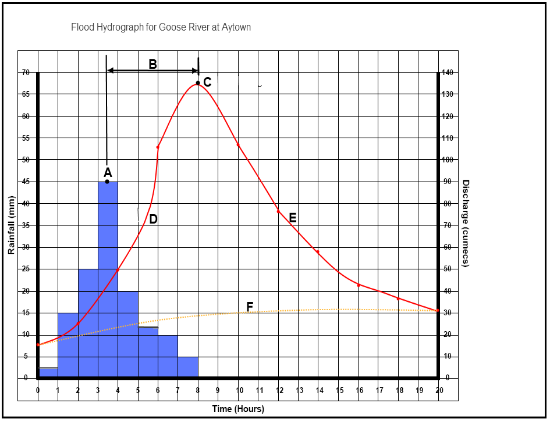Chapter 4 - Emerging Water Shortages - Plan B 3.0
-
70% of all water is used for ______________
-
Cleaning and preparing food
-
Flushing toilets
-
Irrigation
-
Washing hair
-
A short quiz over chapter 4 from Lester Brown's Plan B 3.0.
Giving or receiving answers is against the Paschal Honor code!

Quiz Preview
- 2.
The survey reporeted that under Hebei Province inthe heart of the North China Plain, the average level of the deep aquifer was dropping nearly _____ meters per year
-
3
-
1
-
7
-
12
Correct Answer
A. 3Explanation
The survey reported that under Hebei Province in the heart of the North China Plain, the average level of the deep aquifer was dropping nearly 3 meters per year.Rate this question:
-
- 3.
_____________ blackouts are reaching epidemic proportions in states where half of the electricity is used to pump water from depths of up to a kilometer!
-
Electricity
-
Television
-
Water
-
Transformation
Correct Answer
A. ElectricityExplanation
The correct answer is "electricity" because the statement mentions that blackouts are becoming increasingly common in states where a significant amount of electricity is being used to pump water from deep depths. This suggests that the lack of electricity is causing the blackouts, making it the most logical answer.Rate this question:
-
- 4.
What percent has Africa's Lake Chad shrunk in the past 40 years?
-
96%
-
76%
-
48%
-
27%
Correct Answer
A. 96%Explanation
Lake Chad has shrunk by 96% in the past 40 years. This means that the lake has lost a significant amount of its original size, with only a small fraction remaining. The drastic reduction in size is likely due to a combination of factors such as climate change, increased water usage for agriculture, and population growth in the surrounding areas. The shrinking of Lake Chad has had severe consequences for the local communities and ecosystems that depend on the lake for their livelihoods and survival.Rate this question:
-
- 5.
The Colorado River now rarely makes it to the sea. With states of Colorado, Uta, Arizona, Nevada and _____________ depending heavily on the Colorado's water, there is little, if any water left when it reaches the Gulf of California.
-
Michigan
-
Texas
-
California
-
Oregon
Correct Answer
A. CaliforniaExplanation
The Colorado River rarely makes it to the sea because the states of Colorado, Utah, Arizona, Nevada, and California heavily rely on its water. By the time the river reaches the Gulf of California, there is little to no water left.Rate this question:
-
- 6.
We each drink on average nearly ___ liters of water per day in one form or another.
-
9
-
7
-
4
-
2
Correct Answer
A. 4Explanation
The average person drinks around 4 liters of water per day in various forms. This includes water consumed directly, as well as water found in beverages, fruits, and vegetables. Water is essential for our bodies to function properly, and it is recommended to stay hydrated by drinking an adequate amount of water each day.Rate this question:
-
- 7.
In the United States, the U.S. Deparment of Agriculture (USDA) reports that in parts of TEXAS, okahoma and Kansas-- the three leading grain-producing states -- the undreground water table has dropped by more than 30 meters (_____ feet)
-
10000
-
542
-
100
-
27
Correct Answer
A. 100Explanation
The correct answer is 100. The question states that the underground water table in parts of Texas, Oklahoma, and Kansas has dropped by more than 30 meters. The answer of 100 is the only option that is greater than 30.Rate this question:
-
- 8.
It takes ____ tons of water to grow a ton of wheat worth $200. Think about that!
-
10
-
100
-
1000
-
10000
Correct Answer
A. 1000Explanation
The correct answer is 1000. This means that it takes 1000 tons of water to grow a ton of wheat worth $200. This suggests that wheat production requires a significant amount of water, which highlights the importance of water conservation and efficient irrigation methods in agricultural practices.Rate this question:
-
- 9.
When water supply drops below _____ cubic meters per person, people face scarcity.
-
1000
-
10000
-
1500
-
2100
Correct Answer
A. 1000Explanation
When the water supply drops below 1000 cubic meters per person, people face scarcity. This means that there is not enough water available for each individual to meet their basic needs. Scarcity of water can lead to various problems such as inadequate sanitation, limited access to clean drinking water, and difficulties in agriculture and food production. It is important to ensure a sufficient water supply to prevent these issues and maintain the well-being of the population.Rate this question:
-
- 10.
As cotton planting expanded, so too did the diversion of water form the two rivers that fed the Aral Sea. And as the sea shrank, the salt concentrations climbed until the fish died. The thriving fisherery that once yielded ______ tons of seafood per year disappeared, as did the jobs on the fishing bots and in the fish processing factories. We are growin cotton in west Texas - a place where cotton can't grow without irrigation. Think about it.
-
500
-
5000
-
50000
-
500000
Correct Answer
A. 50000Explanation
The given passage states that as cotton planting expanded, water from the rivers that fed the Aral Sea was diverted, causing the sea to shrink and salt concentrations to rise. This led to the death of fish and the decline of the fishery industry. Therefore, the correct answer of 50000 tons is a reasonable estimate for the amount of seafood that was once yielded per year.Rate this question:
-
- 11.
The annual loss of water from a reservoir in arid or semiarid regions, where evaporation rates are high, is typically equal to ___ percent of its storage capacity.
-
5
-
10
-
15
-
20
-
25
Correct Answer
A. 10Explanation
In arid or semiarid regions with high evaporation rates, a reservoir tends to lose water annually. The percentage of water loss is typically equal to 10% of its storage capacity.Rate this question:
-
- 12.
What country is traditionally the leading wheat importer?
-
Canada
-
Nepal
-
Japan
-
China
Correct Answer
A. JapanExplanation
Japan is traditionally the leading wheat importer because it has a high demand for wheat due to its large population and limited agricultural land. Japan relies heavily on wheat imports to meet its domestic demand for wheat-based products such as bread, noodles, and pastries. The country's traditional cuisine also includes a variety of wheat-based dishes, further driving the need for wheat imports. Additionally, Japan's climate and topography are not suitable for large-scale wheat cultivation, making it dependent on imports to fulfill its wheat requirements.Rate this question:
-
Quiz Review Timeline (Updated): Aug 9, 2024 +
Our quizzes are rigorously reviewed, monitored and continuously updated by our expert board to maintain accuracy, relevance, and timeliness.
-
Current Version
-
Aug 09, 2024Quiz Edited by
ProProfs Editorial Team -
Dec 14, 2010Quiz Created by
AndrewBrinker
Water Resources And Biodiversity
Explore key ecological concepts through the 'Water Resources and Biodiversity' quiz. It assesses understanding of watersheds, biodiversity, and environmental management, focusing...
Questions:
7 |
Attempts:
143 |
Last updated:
Mar 21, 2023
|
Pumping Test: Trivia Quiz! MCQ
In many communities, groundwater is extracted through electric water pumps, which use diesel to fuel their systems. For one to operate pumping equipment, they require...
Questions:
74 |
Attempts:
728 |
Last updated:
Mar 20, 2023
|
Water System, Drainage Basins & Flooding - OPEN
Quiz to assess recall and understanding of key terms & concepts covered in the first topics of Freshwater: Issues & conflicts
Questions:
25 |
Attempts:
240 |
Last updated:
Mar 19, 2023
|
Water Sustainability Quiz Questions! Trivia
Explore the crucial topic of water sustainability with our trivia quiz! Test your knowledge on global water availability, consumption targets, and key dates like World Water Day....
Questions:
10 |
Attempts:
1113 |
Last updated:
Sep 25, 2023
|
How Much Do You Know About Our Water?
Explore your knowledge about water with our quiz! Learn about Australian rainfall statistics, methods for measuring rainfall, water treatment processes like desalination, and the...
Questions:
14 |
Attempts:
73 |
Last updated:
Jun 12, 2023
|
Water Resources Quiz
Water is everywhere, but do you really know all about it? Take our Water Resources Quiz and find out. This quiz digs deep into how we use water, how we can save it, and why...
Questions:
20 |
Attempts:
36687 |
Last updated:
Sep 11, 2024
|
 Back to top
Back to top








